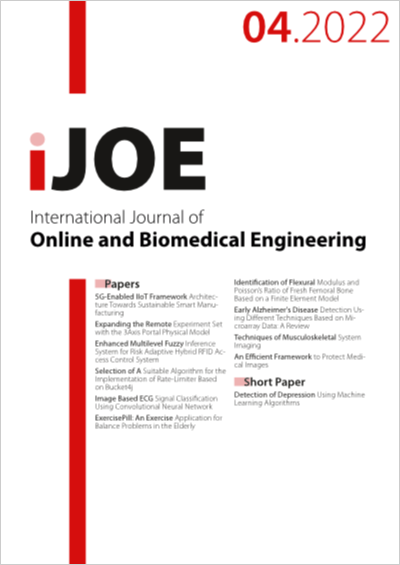Identification of Flexural Modulus and Poisson’s Ratio of Fresh Femoral Bone Based on a Finite Element Model
DOI:
https://doi.org/10.3991/ijoe.v18i04.28939Keywords:
FEA, Surrogate model, Biomechanics test, Fresh femoral bone, RBF, KGAbstract
Finite element analysis (FEA) is increasingly applied to medicine because it could increase accuracy and rapid outcomes. However, there is a lack of the method to determine Young’s modulus and Poisson’s ratio for fresh femoral bone and the mathematical principle’s optimization for calculating nonuniform configuration. This study aimed to investigate the surrogate model for the optimization method to determine Young’s modulus and Poisson’s ratio of the fresh femoral bone. Young’s modulus and Poisson’s ratio obtained 20 ranked pairs by the Latin hypercube sampling method. The values were calculated in the finite element for root mean square error (RMSE) and were then used for solutions by a quadratic function, radial basis function (RBF), and Kriging (KG). The lowest RMSE value was 0.1518 for the RBF method, with the young’s modulus at 304.4756 and the Poisson’s ratio at 0.3334. The current study identified the RBF technique to determine the properties of the femoral bone. Moreover, the RBF procedure might apply to other long bones because of the comparable nonuniform configuration.
Downloads
Published
How to Cite
Issue
Section
License
Copyright (c) 2022 Jarupol Suriyawanakul, Kriengkrai Nabudda

This work is licensed under a Creative Commons Attribution 4.0 International License.



